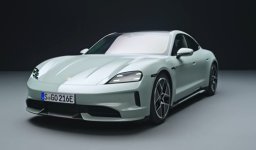What’s the Evidence
- Taycans are dropping a lot in resale value. Some high-end models (Turbo, Turbo S) have lost as much as US$90,000-US$100,000 in 3-4 years.
- Even base or mid-range Taycans are now going for less than half of their new price in many markets.
- UK: pre-2025 Taycans are losing nearly 50% of their value. There’s talk of paused sales of older Taycans.
- Forums and users cite oversupply, steep discounts/incentives on new cars, and concerns about battery life / depreciation as big issues.
So it’s not just anecdotes; the market data shows it’s real and happening fast.

Why Is It Happening?
Several interlinked factors are causing the Taycan to depreciate sharply. These include technical, economic, market, and brand/consumer perception issues:
| Factor | What It Means | How It Affects Depreciation |
|---|---|---|
| Rapid Tech Advancements | Electric vehicle tech (battery, charging speed, range) improves quickly. Newer Taycans / alternatives get better range, faster charging, updated firmware/software. | Older models look less attractive. Buyers discount older cars heavily because “newer = substantially better”. |
| Oversupply (Especially Used & Lease Returns) | Many Taycans are being leased or bought with incentives, and now they are coming back into the used car market in large numbers. Dealerships discount new stock as well. | More supply + not enough demand = downward pressure on used prices. |
| High Price to Begin With | New Taycans are expensive, especially in top trim levels. High option content and MSRP result in high base prices. | When something is expensive, buyers expect cost savings buying used — so the gap between new and used shows larger percentage loss. |
| Battery / EV-Specific Concerns | Battery degradation, cost of replacement, range anxiety, charging infrastructure, recall / reliability issues. | These concerns make used buyers more cautious, pushing down willingness to pay. Also warranty issues: older Taycans may have less battery warranty left. |
| Discounts and Incentives on New Taycans | Porsche and dealers sometimes offer large incentives on new Taycans, especially to move older inventory or facelift models. | This sets a high bar: if a new one is discounted a lot, used ones must be cheaper to compete, so used values drop. |
| Changing Consumer Preferences | SUVs are very popular. Sedans, even sporty ones, are less in demand than crossovers/ SUVs. Also, many EV buyers care more about very high range or fast charging networks. If a Taycan doesn’t “keep up”, it becomes less desirable. | |
| Policy, Incentives & Taxation | Incentives (tax breaks, subsidies) tend to favor new EVs. Used EVs often miss out on those benefits. When incentives change or are removed, new-car demand can drop, but also hurts used values. |
What Makes It Worse for the Taycan
Some specific Taycan issues amplify depreciation compared to other EVs or cars:
- Lower range vs newer competitors: As newer EVs push further, earlier Taycans are less impressive on a per-charge range / charging speed basis. Buyers compare to Tesla, Lucid, etc.
- High options cost but poor resale premium: Expensive optional extras don’t always translate into proportional resale value. Buyers may not pay for rare options out of pocket.
- Recalls / reliability issues: Anything that lowers trust (battery recall, warranty issues) tends to hit resale values more in EVs. I saw that older Taycans have had some battery-related issues or worries about battery warranty expiry.
How Bad Is It?
- Some Taycans lose ~40-50% of their new price in just 2-4 years.
- Top spec versions (Turbo, Turbo S) lose more in absolute dollars (because their starting price is high), so % depreciation can be brutal.
- The depreciation is not uniform: base / 4S trims tend to hold up a little better (in % terms) than the Turbo-S models, simply because the entry level price is lower so the “loss” is numerically smaller. But even then, losses are steep.
What Might Help (Stabilize Values)
- Longer warranty / battery guarantees on used models could build buyer confidence.
- Software updates / charging performance improvements for earlier models that bring them closer to newer standards help.
- Better incentives / tax breaks for used EVs. If policy supports them, demand will rise.
- Reduced new-vehicle discounts, so the spread between new and used isn’t so big.
- More robust charging infrastructure and public perception of battery reliability.
Takeaway
- If you buy a new Taycan, expect that a large chunk of value will evaporate in the first few years due to all these factors.
- If you buy used, you can get a lot of Porsche / EV performance for cheaper — but you’ll still need to account for battery life, warranty, and what newer cars offer.
- The depreciation challenge for Porsche is not unique; it reflects broader EV market realities. But for such premium models, the fallout is more visible because the stakes (price, expectations) are higher.
